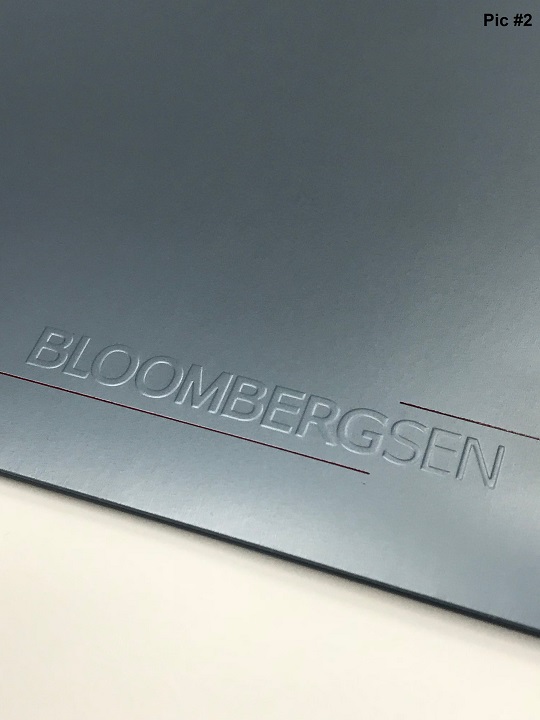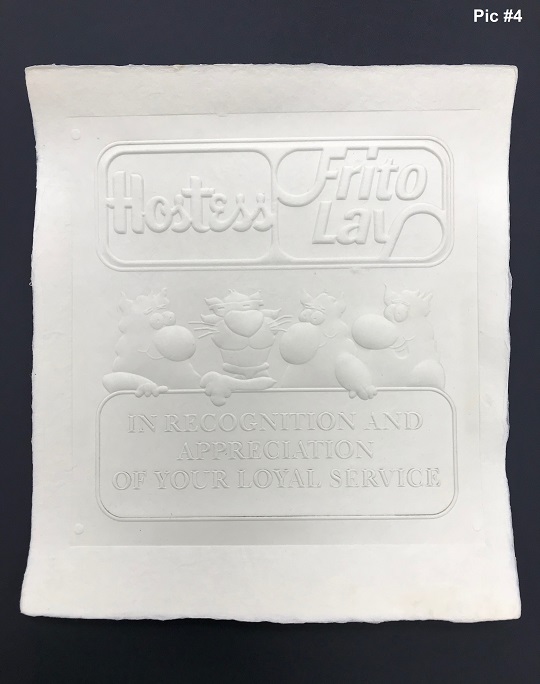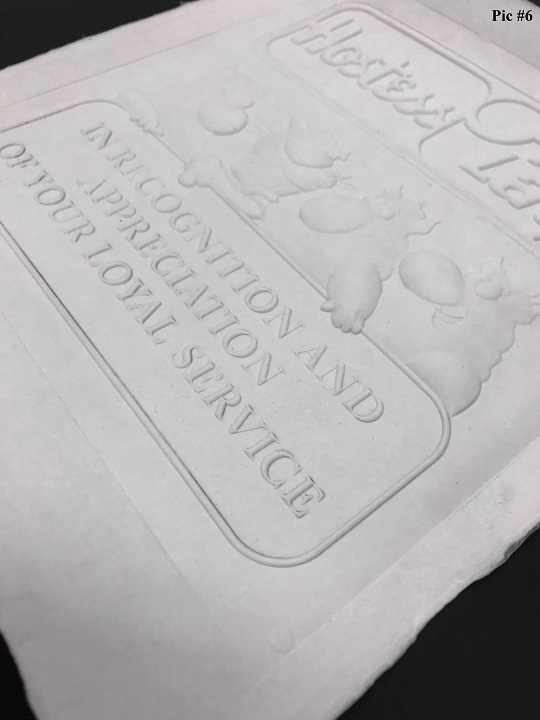I only repeat a product in an Eblast if there are changes, add-ons, or improvements to the products. This Eblast particularly is a repeat of April 10, 2018 is about embossing; the first portion following is a review of basic embossing, followed by a new process we have introduced; namely “wet-embossing.”
Embossing is the process of using male and female etched dies (typically made of magnesium, brass or copper) and heat to raise or push letters or a design above the surface of a sheet of paper; it creates an eye-catching three-dimensional effect. The embossing die is made with a reversed image of the design. When this process creates an indented image, it is known as debossing. Computer controlled milling machines or hand sculpted engraving are used to convert the graphic image to the metal embossing die. A good example of embossing that many of us have seen (and felt) is a notarized document. Embossed printing pieces can be used without ink or foil (known as blind embossing), or with ink or foil such as gold, silver or many other colours, adding another distinctive and visually appealing element to the embossed piece.
Many elements and images in your design can be embossed. Embossed pieces use a detailed die and heavier paper stock to highlight the depth and detail of the embossed graphics or images. Embossing is a great way to draw out and highlight important details, such as names, designs, or logos.
Embossing uses a specially made die under high pressure to form a raised three-dimensional impression that allows you to literally feel the design. If an impression is molded so that it is lower than the paper’s surface, it is called a deboss.
Picture #1 shows the basic process of standard embossing. Picture #2 show a product that has been embossed the standard way. Picture #3 is further technical information on how the embossing projects works. Pictures #4-8 show our new embossing process called “wet-embossing.”






